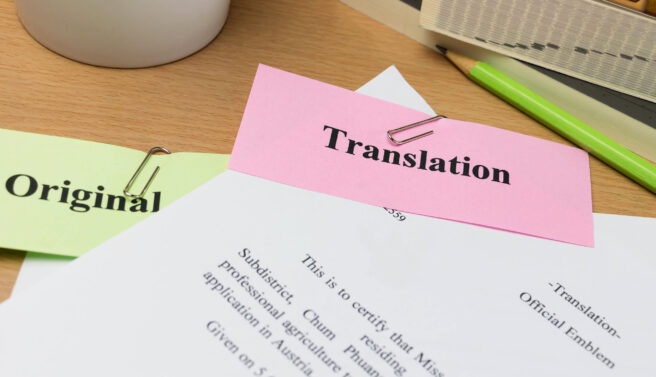The alteration between staying home and working from home because of the pandemic — has led to a growth in the number of internet users. And more people have embraced the choice to take most of their courses online. Even though most e-learning programs have their courses written in the English language, this can be a hindrance to non-English speakers. To effectively translate your e-learning courses, find below 5 tips that can help you with that:
- Acknowledge your audience and their needs. You should undertake the required research and focus on details to better understand your learners’ cultural backgrounds. Some countries speak more than one language; know the desired languages of your targeted audience and create content based on this. On your platform, allow your audience to pick their preferred language rather than their nation.
- Your online course, which is in English, must be created to assist stress-free translations. It must be written in clear content for easy and comprehensive translation.
- To simplify easy and effective translation, you must follow the international standards and principles when devising the substance of your online course. Components such as the User Interface, the date, and the currency display formats are some of the content that needs to be internationalized.
- Your content must offer the learners with good reading experiences.
- For effective translation of your online courses, use the service of professionals who know their work have vast experience.
Importance of digital transformation in the education system
The eLearning industry has expanded exceptionally fast over the past decade, and it is now becoming the first haven of call for many prospective learners and companies looking for training resolutions. The growth of eLearning has led to various new digital educational solutions, including educational programs such as learning management systems (LMS) and learning content management systems (LCMS). These digital educational solutions can be particularly valuable for myriad learners together with those who are attending more traditional classroom-based courses. Combined learning programs that integrate face-to-face teaching with backup from educational platforms can be an excellent way for course leaders to ensure their students get the best parts of both alternatives.
Digital transformation is crucial because it empowers the users of educational solutions such as LMS/LCMS educational platforms to discover new methods to offer value to their students.
This could be done by finding new and engaging ways to connect digitally, it could be exploring different uses for a virtual classroom, or it could be testing with different forms of intermingled learning.
Quick notes in translating online courses
There are two opportunities you may want to consider when translating an online course. Nevertheless, they have their own pros and cons. Let us talk about them. This will provide the best of both worlds while boosting the way you provide multilingual courses.
- Use a machine translation service. You will have to manually copy the original text into your selected tool. Subject to the amount of content you need to translate, this could take a long time Once you have translated the content, you must paste it into your site. Once more, this can be time-consuming for you and will involve designing a whole new set of pages and/or courses.
- Hire a professional translator. They will be capable to devote the most time to each translation you ask for. A translator can fulfill your very requirements on a page-by-page basis. This makes for highly-accurate translations They can provide extra feedback to your translations where necessary. This is good news if you don’t have knowledge of the second language.
For accurate and cost-effective translation services, contact us.
Ensure that your elearning courses are appropriate for all users. Our translators at eTranslation Services are experts in different subjects, so you can be sure that your elearning programs are appropriate to your target culture. Working with more than 100 languages, we can effectively and accurately translate your elearning courses to fit your audience. We’d love to hear from you. Get in touch with us so that we can discuss your translation needs. You can either send an email to [email protected] or call us at (800) 882-6058 today.



